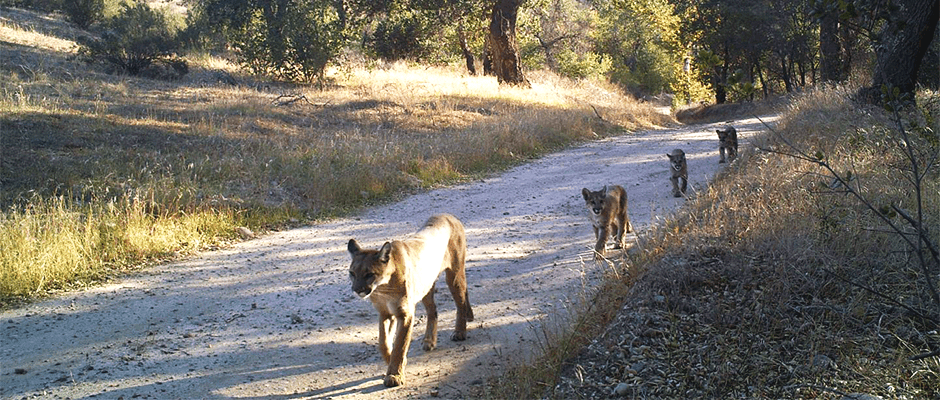Share this article
Development is dividing California’s puma populations
Habitat fragmentation is splintering California’s mountain lion (Puma concolor) populations, researchers found. As urbanization between Los Angeles and San Diego spreads across landscapes historically used by mountain lions, it is causing some groups of mountain lions to become inbred, raising concerns about the populations’ long-term health.
“It is concerning,” said Kyle Gustafson, a Missouri Southern State University assistant professor and lead author of the study published in Conservation Genetics. “When you read the literature, you find out that mountain lions can migrate across multiple states, hundreds and hundreds of miles. Our data is showing that in some parts of the country, especially in California, that doesn’t seem to be the norm. They’re not moving very much in these heavily impacted areas.”
That creates a problem for gene flow between the populations, Gustafson said. While populations in the mountains of the Sierra Nevada showed a high level of genetic diversity — even more than those in the less urbanized expanses of neighboring Nevada — in Southern California’s dense urban areas, researchers found small, inbred populations.
In some cases, their genetic diversity is approaching the low diversity seen in endangered Florida panther (P. c. coryi) populations, said senior author Holly Ernest, a TWS member and professor at the University of Wyoming. “A next priority will be to watch for dangerous health problems.”
In panthers, low genetic diversity has led to hard to detect ailments like heart defects, Ernest said, but inbreeding has also led some panthers to develop kinked tails, which are far easier to spot but less reliable. Some California mountain lions in inbred populations also have appeared with kinked tails, Ernest said, “but we can’t tell if those tails are kinked because they were broken or they were a genetic defect.”
Working with collaborators in multiple wildlife agencies and universities, the researchers genotyped almost 1,000 mountain lions, identifying nine genetic populations in California and one in Nevada. The California populations were far more genetically distinct than those in Nevada, they found, due to the spread of cities and highways throughout historic mountain lion territory, which has blocked individuals from migrating and breeding with other populations.
“These individual migrants are of immense conservation importance,” Gustafson said, and protecting them is critical to improve gene flow between genetically poor populations.
“But that alone is going to be a moot point if we just try to conserve the lions themselves,” he said. “If the landscape that’s necessary to maintain connection between these populations continues to be developed, the conservation of individual mountain lions isn’t going to have much of an effect.”
Header Image:
Mountain lion cubs walk through the Irvine Ranch Conservancy along California’s West Coast.
©Irvine Ranch Conservancy








